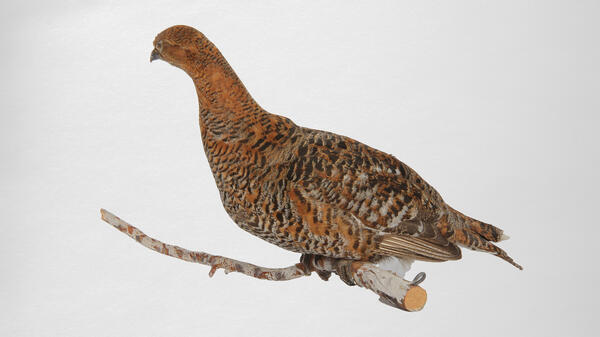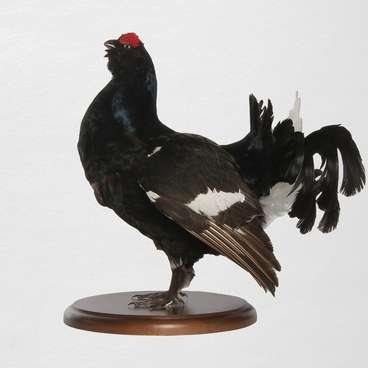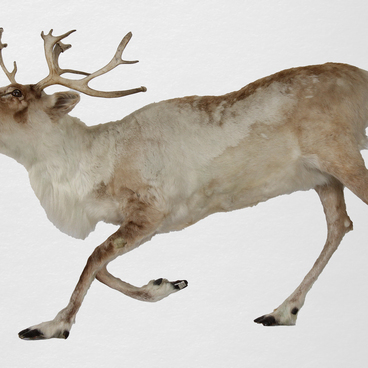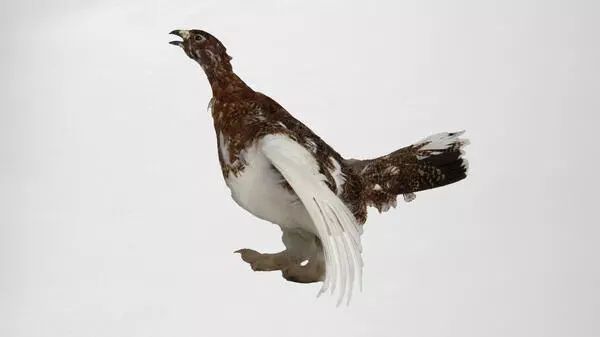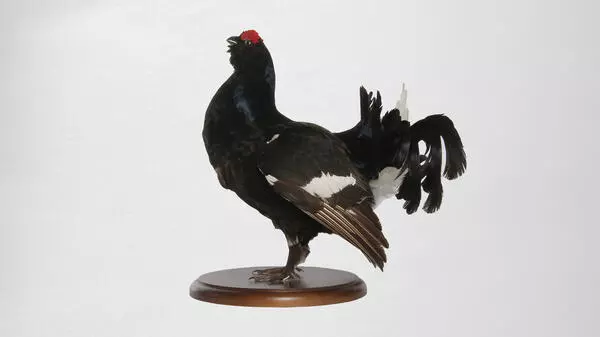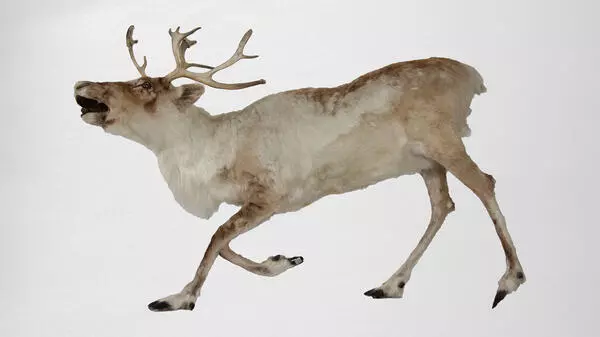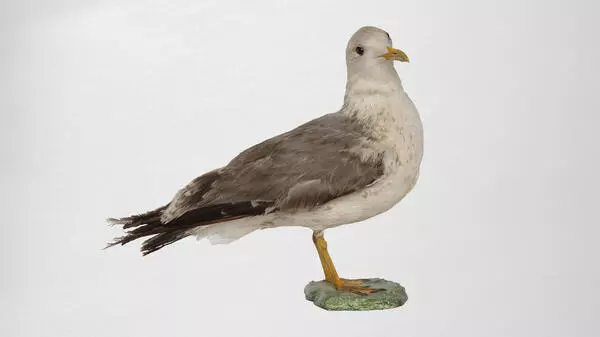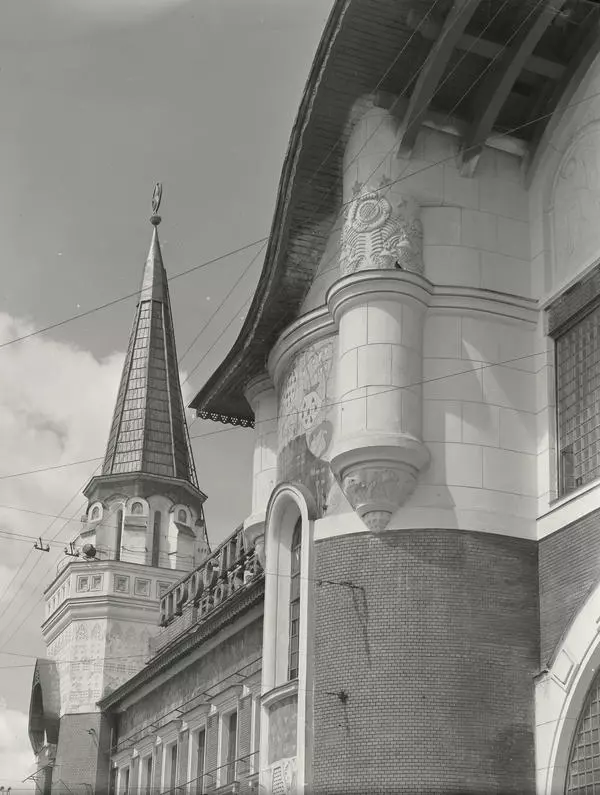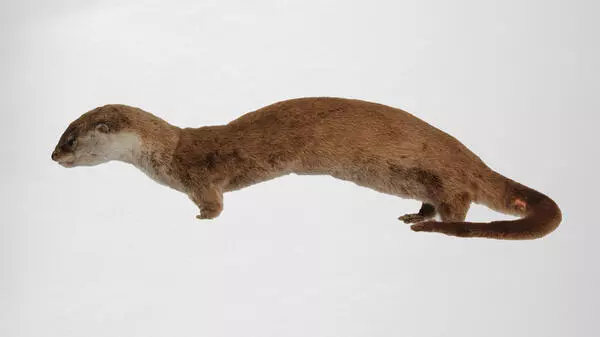The Muravlenko museum houses a stuffed female grouse. It belongs to the Pheasant (Phasianidae) family and lives practically throughout Eurasia — from the Arctic Circle to steppe zones and semi-deserts.
A female grouse is much smaller than a male blackcock and differs in color. This difference between individuals of different sexes within the same species is called pronounced sexual dimorphism.
Young and adult black grouse females can be from 47 to 60 centimeters long, and their tail can be up to 123 centimeters. The wingspan of a female bird is from 77 to 80 centimeters. An adult weighs in the range of 0.7–1.1 kilograms.
The grouse has reddish plumage with streaks, brown and black blotches and transverse stripes. Flight feathers have a vivid brown streaky or cross-striped pattern. The lower part of the body is colored more evenly than the upper one. There is a whitish spot on the throat with small brown specks.
Grouses are both sedentary and nomadic species. Nomadic populations live in cold regions and move to the south for wintering. The activity of migrations periodically increases — this is associated with an increase in the number of populations, which are becoming crowded in one territory.
The grouse nests in wilderness areas with dense tall vegetation, as well as the near fresh water sources. In addition, the grouse tries to nest in the vicinity of food sources: trees and shrubs.
The bird builds its nest in dense grass, which reliably masks and protects the clutch; often there is a cover on top in the form of overhanging branches. The nest looks like a small pit, sparsely lined with grass, leaves, stems, twigs and feathers. It is from 4 to 6 centimeters deep, and its diameter is from 16 to 22 centimeters.
The time for laying and incubating eggs depends on the climatic conditions of the region. As a rule, it takes place in May and June. Older females of black grouse lay eggs earlier than younger ones do. If the clutch of eggs is unsuccessful, they have a chance to return to the lekking ground and try to acquire offspring again.
The clutch usually consists of 7–9 eggs; the grouse incubates them for 23–25 days and leaves the nest only in order to eat. It periodically flips the eggs. When the hatchlings pip, the brood leaves the nest. At the age of 10 days, the hatchlings can already flutter, and after a month they can fly.
A female grouse is much smaller than a male blackcock and differs in color. This difference between individuals of different sexes within the same species is called pronounced sexual dimorphism.
Young and adult black grouse females can be from 47 to 60 centimeters long, and their tail can be up to 123 centimeters. The wingspan of a female bird is from 77 to 80 centimeters. An adult weighs in the range of 0.7–1.1 kilograms.
The grouse has reddish plumage with streaks, brown and black blotches and transverse stripes. Flight feathers have a vivid brown streaky or cross-striped pattern. The lower part of the body is colored more evenly than the upper one. There is a whitish spot on the throat with small brown specks.
Grouses are both sedentary and nomadic species. Nomadic populations live in cold regions and move to the south for wintering. The activity of migrations periodically increases — this is associated with an increase in the number of populations, which are becoming crowded in one territory.
The grouse nests in wilderness areas with dense tall vegetation, as well as the near fresh water sources. In addition, the grouse tries to nest in the vicinity of food sources: trees and shrubs.
The bird builds its nest in dense grass, which reliably masks and protects the clutch; often there is a cover on top in the form of overhanging branches. The nest looks like a small pit, sparsely lined with grass, leaves, stems, twigs and feathers. It is from 4 to 6 centimeters deep, and its diameter is from 16 to 22 centimeters.
The time for laying and incubating eggs depends on the climatic conditions of the region. As a rule, it takes place in May and June. Older females of black grouse lay eggs earlier than younger ones do. If the clutch of eggs is unsuccessful, they have a chance to return to the lekking ground and try to acquire offspring again.
The clutch usually consists of 7–9 eggs; the grouse incubates them for 23–25 days and leaves the nest only in order to eat. It periodically flips the eggs. When the hatchlings pip, the brood leaves the nest. At the age of 10 days, the hatchlings can already flutter, and after a month they can fly.

